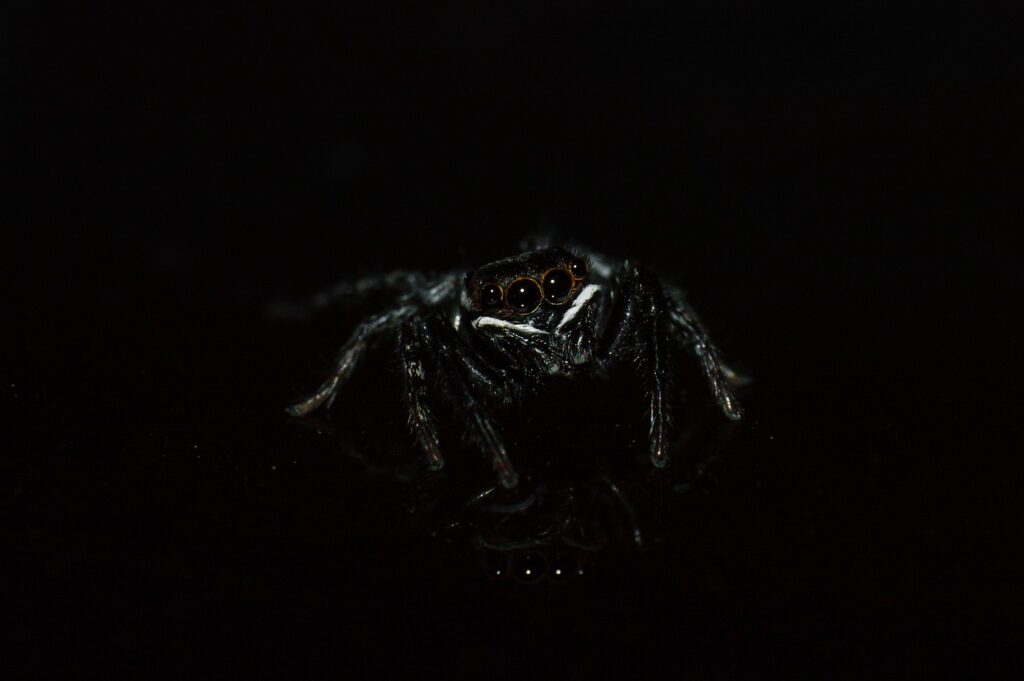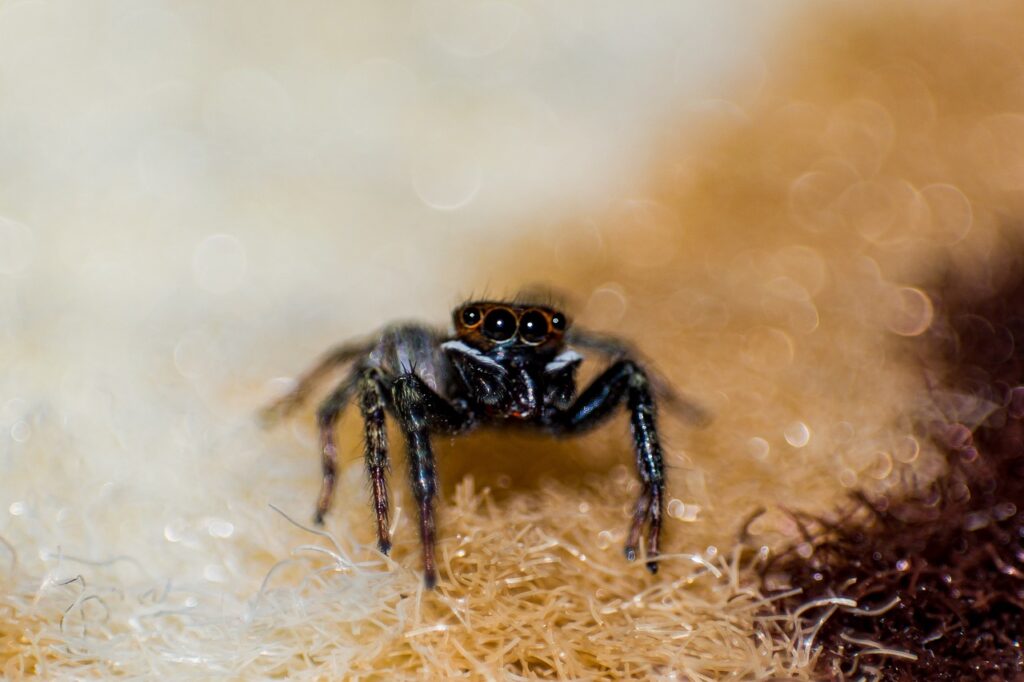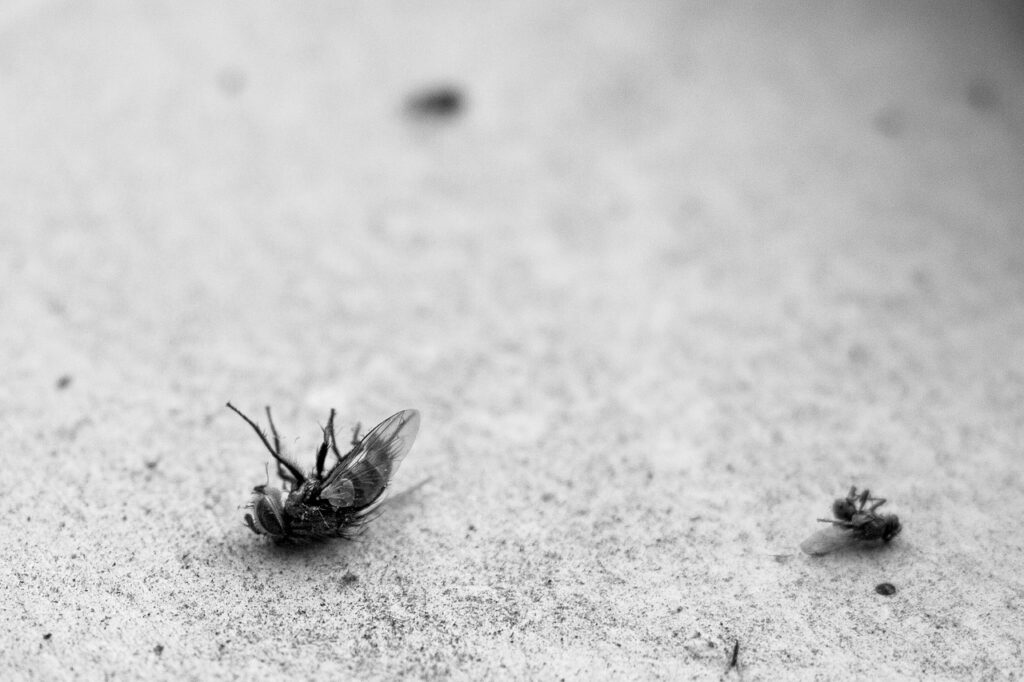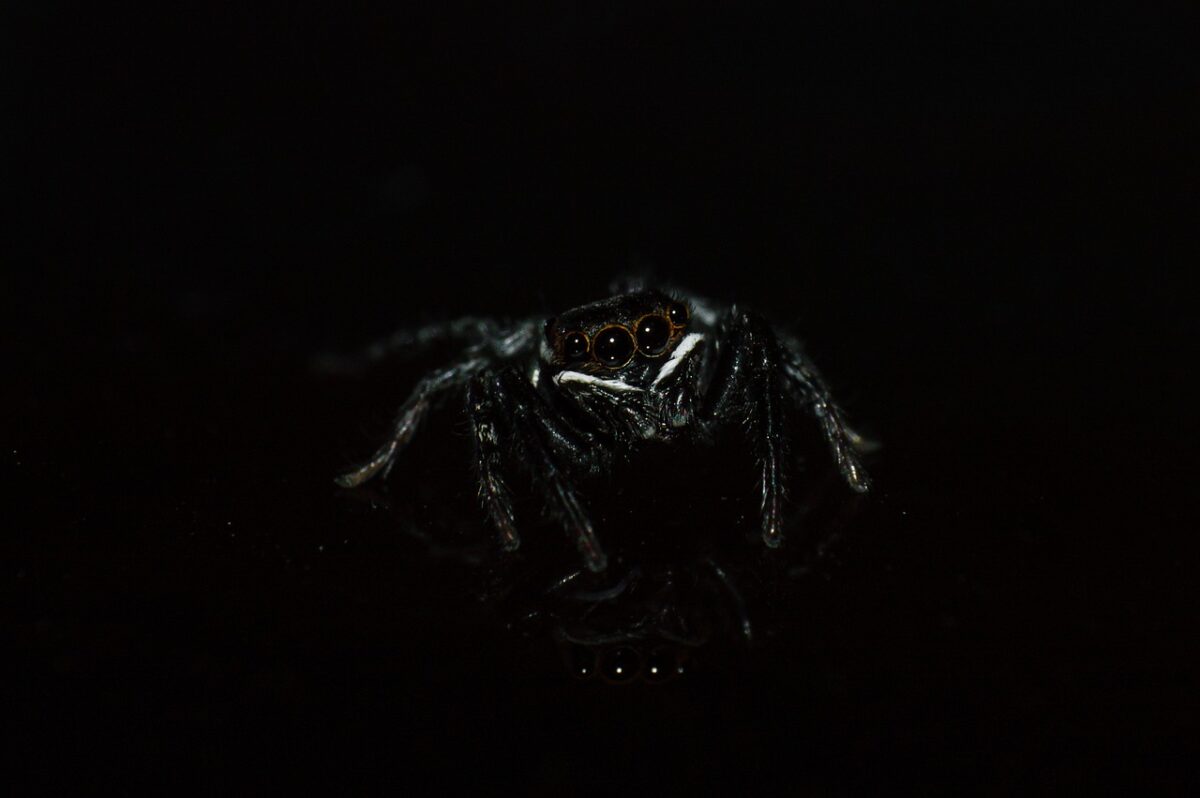Have you ever been bothered by a persistent swarm of flies buzzing around your home? It can be quite annoying and even unsanitary, as flies are known to carry diseases and contaminate your food. In this article, we will explore some effective and friendly ways to tackle a pesky fly problem, ensuring a pest-free and more pleasant living environment for you and your loved ones. From natural repellents to preventive measures, we’ve got you covered with simple yet efficient solutions. Say goodbye to those pesky flies and hello to a fly-free home!

Identifying the Fly Problem
Observing the presence of flies
When dealing with a fly problem, the first step is to observe the presence of flies in and around your living or working space. Look for signs of flies buzzing around, landing on surfaces, or congregating in certain areas. Pay attention to the frequency and number of flies you encounter, as this will help determine the severity of the infestation.
Determining the species of flies
Flies come in various species, and each may require a different approach to control and prevention. Take note of the physical characteristics of the flies you have observed, such as their size, color, and wing patterns. Identifying the species can be challenging, but it can give you important insights into their behavior, preferred habitats, and potential health risks they may pose.
Evaluating the extent of the fly problem
Before implementing any control measures, it is crucial to evaluate the extent of the fly problem. Assess the areas where flies are most commonly found and determine if their presence is localized or widespread. Counting the number of flies you spot or using sticky traps can provide a better understanding of the infestation’s size. This evaluation will help you choose the most appropriate control methods and gauge the effectiveness of any implemented solutions.
Understanding Fly Behavior
Learning about fly life cycles
Understanding the life cycle of flies is key to effective control and prevention. Flies go through several stages, including egg, larva, pupa, and adult. Each stage has specific environmental requirements and durations. By familiarizing yourself with the life cycle of the flies infesting your space, you can target their weak points and disrupt their reproduction cycle, reducing their numbers over time.
Exploring common fly habitats
Flies thrive in environments that provide favorable conditions for breeding and feeding. Common fly habitats include areas with decaying organic matter, garbage bins, animal waste, and damp areas. By identifying and addressing these potential breeding grounds, you can limit the fly population’s growth.
Analyzing the reasons for fly attraction
To effectively control flies, it is essential to analyze the reasons they are attracted to your space. Flies are primarily drawn to food sources, especially rotting or uncovered food. They are also attracted to moisture, warmth, and other flies. Identifying and mitigating these attractants can significantly reduce fly infestations.

Preventive Measures
Maintaining cleanliness and hygiene
One of the most effective preventive measures against flies is maintaining cleanliness and good hygiene practices. Regularly clean and sanitize your living or working space, paying particular attention to areas where flies are commonly found. Keep your trash containers tightly sealed, dispose of garbage promptly, and clean up spills and food debris immediately. By eliminating potential food sources, you can make your space less attractive to flies.
Sealing possible entry points
Flies can enter your space through even the tiniest openings. Inspect doors, windows, vents, and any other potential entry points for gaps or cracks. Seal them off using weather stripping, caulking, or mesh screens to prevent flies from accessing your space. Properly fitting and maintaining screen doors and windows is crucial to keep flies out while allowing for ventilation.
Installing fly screens
Installing fly screens on doors and windows is an effective way to prevent flies from entering your space. Mesh screens with small gaps can keep flies out while allowing fresh air to circulate. Ensure that the screens are in good condition and repair or replace any damaged portions promptly. Regularly clean the screens to prevent buildup of dirt and debris that could attract flies.
Using fly repellents
Fly repellents can be used as an additional preventive measure to deter flies from entering your space. There are various types of fly repellents available, including sprays, candles, and electronic devices. Choose ones that are safe for indoor use and follow the instructions carefully. Keep in mind that repellents may not eliminate flies completely but can help reduce their presence.
Proper waste management
Proper waste management is crucial in preventing fly infestations. Ensure that your garbage bins are tightly sealed and kept away from living or working areas. Regularly empty and clean the bins to remove any potential fly breeding grounds. If you have a compost pile, cover it properly and turn it regularly to discourage fly activity. By managing waste effectively, you can significantly reduce fly populations.
Natural Remedies
Using essential oils as fly repellents
Essential oils can be an effective natural fly repellent. Certain essential oils, such as eucalyptus, lavender, peppermint, and lemongrass, are known to repel flies due to their strong scents. Mix a few drops of the chosen essential oil with water in a spray bottle and use it to spritz areas where flies are commonly found. Reapply the mixture as needed or when the scent fades.
Creating homemade fly traps
Homemade fly traps can help catch and reduce the number of flies in your space. To create a simple trap, fill a shallow container with a mixture of sugar water, vinegar, or rotting fruit. Cover the container with plastic wrap and poke small holes in it. Flies will be attracted to the scent and enter through the holes but will have difficulty escaping.
Using vinegar and soap solution
A vinegar and soap solution can be an effective fly repellent when sprayed on surfaces. Mix equal parts of white vinegar and dish soap in a spray bottle and apply it to areas where flies are present. The vinegar’s strong scent and acidity, combined with the soapy residue, can deter flies from landing and breeding on surfaces.
Planting fly-repelling herbs
Certain herbs have natural insect-repellent properties and can be planted around your living or working area to repel flies. Herbs such as basil, mint, rosemary, and lavender emit scents that flies find unpleasant. Plant them in pots or garden beds near entrances or windows to deter flies from entering your space.
Using ultraviolet light traps
Ultraviolet (UV) light traps provide an effective way to attract and kill flies. These traps use UV light to lure flies, which then get trapped on sticky surfaces or electrocuted. Place the UV light traps in areas where flies are commonly found, such as kitchens, restaurants, or outdoor spaces. Regularly clean and maintain the traps for optimal effectiveness.

Chemical Solutions
Choosing the appropriate insecticide
When all else fails, chemical insecticides can be used to control fly populations. Selecting the appropriate insecticide is crucial for safety and efficacy. Different insecticides target different fly species and have varying application methods. Read and follow the instructions carefully, and consider using low-toxicity or natural-based insecticides whenever possible. Consult a professional if you are unsure about the appropriate choice or application method.
Consulting pest control professionals
In cases of severe fly infestations or when DIY methods prove ineffective, it is advisable to consult pest control professionals. These experts have the knowledge, experience, and tools to effectively control and manage fly problems. They can assess the situation, identify the fly species, and recommend appropriate control measures tailored to your specific needs.
Using insecticide sprays or foggers
Insecticide sprays or foggers can provide an immediate solution for eliminating flies. These products release a fine mist or fog containing insecticide that kills flies upon contact. Follow the instructions provided with the product and ensure proper ventilation before using sprays or foggers indoors. Exercise caution, particularly when using chemical-based solutions, and keep them out of reach of children or pets.
Treating breeding sites with larvicides
To break the fly life cycle effectively, larvicides can be used to target fly breeding sites. Larvicides are specifically designed to kill fly larvae before they develop into adult flies. Identify and treat areas with stagnant water, decaying organic matter, or other fly breeding substrate with larvicides according to the manufacturer’s instructions. This method can help significantly reduce future fly populations.
Implementing insect growth regulators
Insect growth regulators (IGRs) are a long-term solution for fly control. These substances interfere with the normal development of flies, preventing them from reaching adulthood and reproducing. IGRs are available in various forms, including sprays, baits, or insect growth regulator strips. Consult with a pest control professional to determine the most appropriate and effective IGR to use in your specific situation.
Fly Control in Different Settings
Controlling fly problem in homes
When dealing with a fly problem in your home, it is crucial to start by identifying and eliminating the root causes. Ensure proper hygiene and sanitation, seal entry points, and install fly screens on doors and windows. Utilize natural remedies and chemical solutions as necessary, based on the severity of the infestation. Regularly monitor and maintain your fly control efforts to minimize fly populations and keep your home fly-free.
Managing fly infestation in restaurants
Restaurants are particularly susceptible to fly infestations due to food handling and waste disposal. Implement strict sanitation practices, such as regular cleaning, wiping down surfaces, and promptly disposing of food scraps. Install air curtains at entrances to prevent flies from entering and maintain a clean and efficient waste management system. Consult with pest control professionals to develop a comprehensive fly control plan that complies with food safety regulations.
Addressing fly issues in livestock areas
Fly infestations in livestock areas can lead to animal stress and disease transmission. Implement proper waste management strategies, including manure removal and disposal. Use larvicides or fly traps to target breeding sites, and consider using insecticides or insect growth regulators as necessary. Consult with veterinarians or agricultural extension agencies for specific recommendations based on your livestock’s needs and the local fly species.
Fly prevention tips for outdoor events
Outdoor events can attract flies due to food and trash present in open areas. Ensure proper waste management, such as providing covered trash bins and regularly emptying them. Use fly screens or netting around food serving areas to prevent flies from landing. Encourage attendees to cover their food and dispose of trash properly. Consider using fly traps or insecticide foggers before and during the event to control fly populations.
Controlling flies in agricultural settings
Agricultural settings, such as crop fields or orchards, may require specialized fly control methods. Integrate fly control practices into your agricultural management plan, including crop rotation, removal of decaying organic matter, and regular monitoring of pest populations. Consider employing biological control methods, such as releasing fly predators or using biological insecticides. Consult with agricultural experts or county extension agents for specific recommendations and guidance.

Professional Fly Control Services
Understanding when to hire professionals
Professional fly control services should be considered when DIY methods fail to effectively manage the fly problem, or when the infestation poses significant health risks or economic damage. Signs that indicate the need for professional assistance include persistent fly presence despite control efforts, extensive infestation, or difficulty identifying the fly species. Pest control professionals have the expertise and resources to assess the situation accurately and devise appropriate control strategies.
Researching reliable pest control companies
Before hiring a pest control company, it is important to conduct thorough research to ensure reliability and effectiveness. Look for companies with a good reputation, relevant licenses, and certifications. Consider reading online reviews and requesting references from past clients. Obtain multiple quotes to compare prices and services offered. Remember, choosing a reputable and experienced pest control company can make a significant difference in successfully resolving your fly problem.
Comparing different fly control methods
Professional fly control services offer a range of control methods depending on the severity of the infestation and the specific needs of your situation. These may include chemical treatments, biological control methods, trapping systems, or a combination of approaches. Consult with the pest control company to discuss the available options, considering factors such as safety, effectiveness, and long-term sustainability of the chosen methods.
Considering long-term prevention strategies
Effective fly control goes beyond immediate elimination. Pest control professionals can provide guidance on implementing long-term prevention strategies. This may include recommendations on sanitation practices, structural modifications, ongoing monitoring, and regular maintenance. By addressing the root causes of the fly problem and implementing preventive measures, you can minimize the likelihood of future infestations.
Evaluating the effectiveness of professional services
After engaging professional fly control services, it is important to evaluate the effectiveness of their interventions. Assess whether the fly populations have significantly decreased, if they have been eliminated entirely, or if the infestation has resurfaced. Provide feedback to the pest control company, as they might need to adjust their methods based on the evaluation. Regular communication and follow-up can ensure the best possible outcome in managing your fly problem.
Health Risks Associated with Flies
Examining the role of flies in disease transmission
Flies can play a significant role in the transmission of various diseases. As they move from filthy environments to food preparation areas or living spaces, they can pick up disease-causing organisms on their bodies or in their digestive systems. When they subsequently land on exposed food or surfaces, they can transfer these organisms to humans, increasing the risk of infections and illnesses.
Identifying the diseases transmitted by flies
Flies are known to transmit diseases such as salmonellosis, cholera, typhoid fever, dysentery, and E. coli infections. These diseases can cause symptoms ranging from gastrointestinal discomfort to severe illnesses, and in some cases, they can be life-threatening. It is crucial to prevent and control fly infestations to reduce the risk of disease transmission.
Understanding the risks to human health
The health risks associated with flies can be significant, particularly for vulnerable individuals such as young children, elderly individuals, and those with weakened immune systems. In addition to transmitting diseases, flies can also cause skin irritations, allergies, and secondary infections from their bites. Taking proactive measures to manage fly populations can help safeguard the health and well-being of individuals in your environment.
Protective measures to minimize health risks
To minimize the health risks associated with flies, it is essential to implement protective measures. This includes comprehensive fly control strategies, such as eliminating breeding sites, practicing good hygiene, using repellents, and properly storing food. Regular handwashing, particularly before handling food, can also reduce the risk of contracting diseases carried by flies. By prioritizing hygiene and prevention, you can create a safer and healthier environment for yourself and those around you.

Educating Others on Fly Prevention
Teaching children about fly control
Children can play a crucial role in preventing and managing fly infestations. Educate them about the importance of cleanliness, hygiene, and proper waste disposal. Teach them how to identify potential breeding sites, understand the risks associated with flies, and take preventive measures. Encourage them to practice good habits, such as covering food, promptly cleaning spills, and washing hands. By involving children in fly prevention efforts, you cultivate responsible habits at an early age.
Educating employees about fly prevention
In workplaces, educating employees about fly prevention is essential to maintain a healthy and productive environment. Conduct training sessions or distribute informative materials that highlight the importance of cleanliness, proper waste management, and reporting fly sightings. Reinforce good hygiene practices, such as regular handwashing and cleaning of shared spaces. By fostering employee awareness and engagement, you can build a collective effort in fly prevention.
Sharing public awareness campaigns on fly control
Public awareness campaigns can be instrumental in addressing fly control at a community level. Collaborate with local authorities, health departments, or pest control agencies to organize campaigns that emphasize the risks associated with flies and promote preventive measures. Utilize various channels, such as social media, community events, or educational sessions, to reach a broad audience. By raising awareness, you can foster a community culture of cleanliness and vigilant fly control.
Community involvement in fly management programs
Engaging the community in fly management programs can be an effective approach to tackle fly problems on a larger scale. Encourage community members to participate in clean-up drives, sanitary audits, or waste management initiatives. Foster a sense of responsibility and ownership by organizing community discussions or workshops on fly prevention. By involving the community, you can create a collective effort to combat fly infestations and improve overall hygiene and sanitation.
When DIY Methods Fail
Recognizing signs of treatment failure
Sometimes, despite your best efforts, DIY methods may not completely eliminate fly infestations. Signs of treatment failure include a persistent presence of flies, an increase in fly populations over time, or recurring infestations shortly after implementing control measures. If you notice these signs, it may be time to reassess your approach and consider alternative solutions.
Reevaluating fly control strategies
When DIY methods fail, it is important to reevaluate and adjust your fly control strategies. Review the steps you have taken and identify any potential shortcomings or gaps in your approach. Consider consulting pest control professionals for expert advice and assistance. They can provide insights into alternative methods or recommend specific solutions tailored to your unique situation.
Seeking professional assistance
If your fly problem persists despite your best efforts, seeking professional assistance is often the most effective course of action. Pest control professionals have the expertise, tools, and knowledge to tackle even the most challenging fly infestations. They can conduct a thorough assessment, develop a customized plan, and execute targeted control methods to eliminate flies and prevent future occurrences. Don’t hesitate to reach out for professional help when DIY methods have proven unsuccessful.
In conclusion, dealing with a pesky fly problem requires a comprehensive approach that includes identifying the issue, understanding fly behavior, implementing preventive measures, and considering natural remedies or chemical solutions when necessary. Whether you’re dealing with flies at home, in a commercial setting, or in agricultural areas, there are specific control methods that can effectively address the problem. It is important to be aware of the health risks associated with flies and take proactive measures to prevent disease transmission. Educating others on fly prevention and seeking professional assistance when needed are integral parts of managing fly infestations. By following these guidelines, you can successfully control and prevent fly problems, creating a healthier and more comfortable environment for yourself and those around you.




